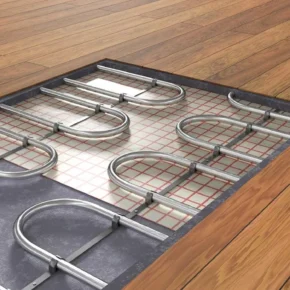Installing water meters is becoming increasingly popular among homeowners. Not only is it a mandatory requirement in many regions, but it is also an effective way to control costs and save money.
Advantages of installing water meters
- Save money
Without meters, water bills are charged based on average consumption rates, which often exceed actual usage. With meters, you only pay for what you actually use. - Consumption control
Meters help track the amount of water used, which encourages more economical use and reduces costs. - Fairness in calculations
If the house has a centralized water supply, installing individual meters eliminates the need to share water costs between all residents, regardless of actual consumption. - Reducing the burden on the environment
By saving water, the burden on water supply and treatment systems is reduced, which has a positive impact on the environment.
What you need to know before installing meters
- Types of meters
Meters can be:- Mechanical (turbine) : affordable, but sensitive to water quality.
- Electronic : more accurate in measurement, but more expensive.
- Certification and warranty
Before purchasing, make sure that the meter has a certificate of conformity and meets the standards of your region. Pay attention to the warranty period, which is usually 1–2 years. - The need for sealing
After installation, the meter must be sealed by representatives of the water supply company. This confirms its suitability for use and ensures correct metering. - Maintenance and Inspection
Meters require regular inspection (every few years, depending on the model). This ensures their accuracy and compliance with the service provider’s requirements.
The process of installing water meters
- Preparing for installation
- Contact a certified specialist for equipment selection and installation.
- Agree on a work plan with the water supply company.
- Assembling
- The meter is installed on the cold and hot water pipeline.
- Additionally, water purification filters can be installed to extend the life of the device.
- Official registration
After installation, it is necessary to invite a representative of the water utility to check and seal the meter. The device data (serial number, initial indicators) are entered in the acceptance certificate.
How meters help save money
- Rational use of water
By knowing the exact amount of consumption, you can regulate habits, for example:- Use a shower instead of a bath.
- Turn off the water while brushing your teeth.
- Check plumbing for leaks.
- Using additional technologies
- Faucet aerators reduce water consumption.
- Installing a dishwasher and washing machine with a high energy efficiency class also contributes to savings.
- Reducing water losses.
The meter helps to quickly detect irrational consumption or leaks in the system.
Installing water meters is a smart choice that saves money, controls consumption, and provides fair billing. Choose quality devices, follow the rules for their installation and use, and you will not only save money, but also contribute to the preservation of natural resources.















